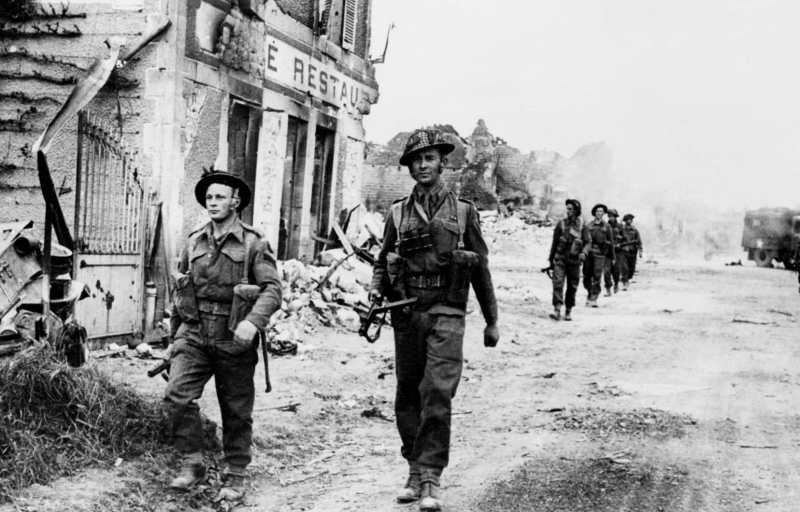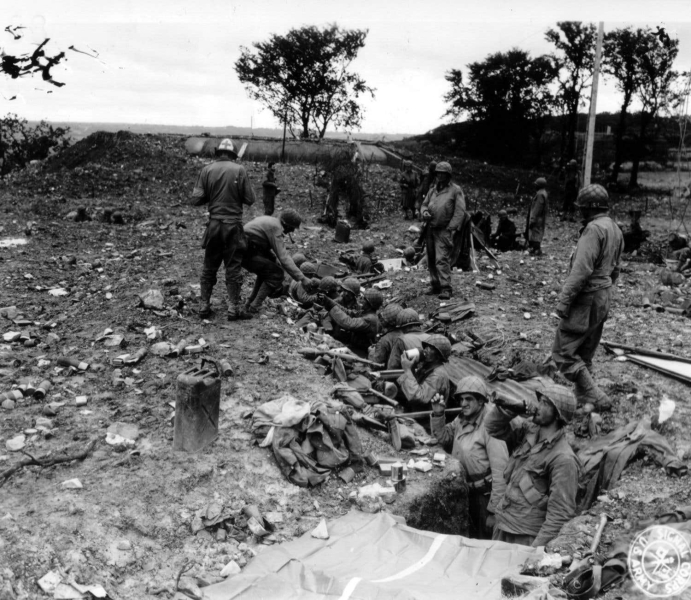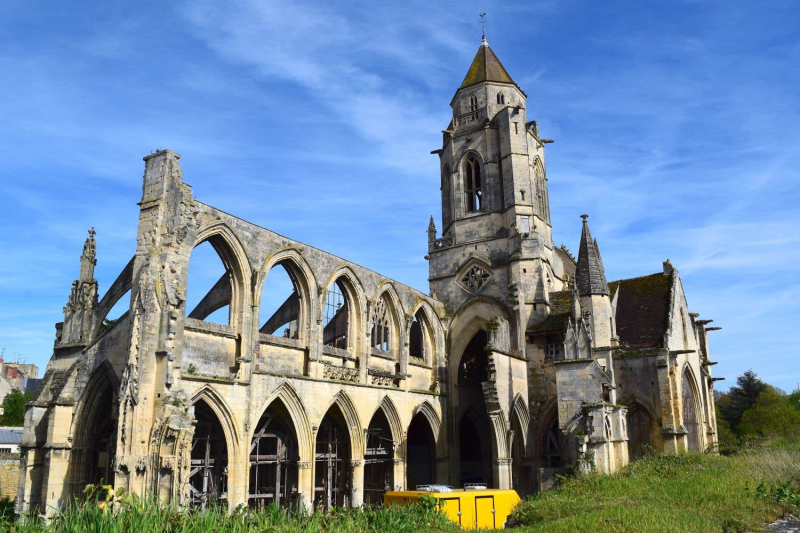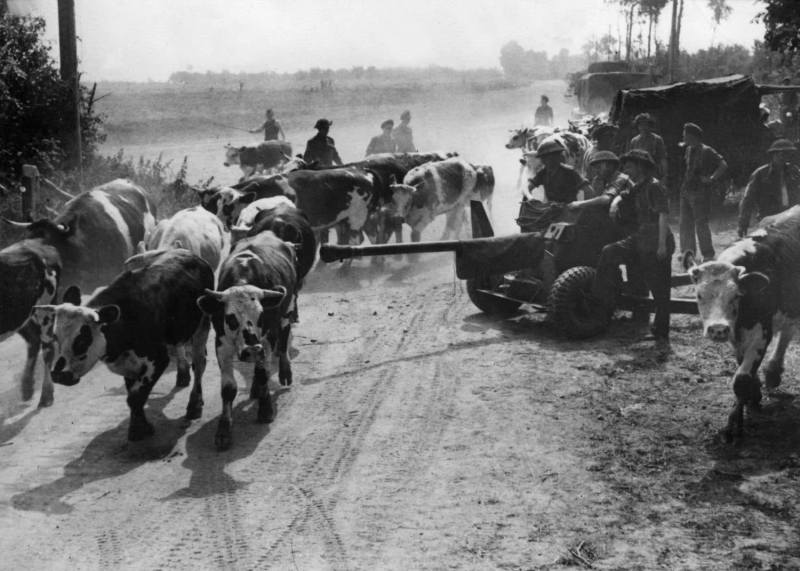
Photo: Agence France-Presse Archives British soldiers crossing the village of Douet on June 8, 1944, a few days after the assault by Allied forces on the Normandy beaches.
Alexander Shields
Published at 0:00
- Europe
Much less known than the landing of June 6, 1944, the Battle of Normandy, which followed, was decisive for the outcome of the Second World War, starting with the liberation of France from the Nazi yoke. But the fighting, which lasted nearly three months, was particularly deadly and destructive, particularly for the civilian populations.
“The west of France undoubtedly suffered some of the toughest fights ever. And, whatever Soviet propaganda may have said, the Battle of Normandy was certainly at least as deadly and decisive as that of the Eastern Front,” summarizes the renowned British historian Antony Beevor, in his reference work D-Day and the Battle of Normandy.
Official data also gives the measure of the slaughter which led the Allies from the beaches of Normandy to Paris, liberated on August 25, 1944. In just under three months of fighting, the Germans lost more than 200,000 soldiers (killed, wounded or missing), including 50,000 killed, and over 200,000 additional soldiers were taken prisoner. The Allies (Americans, British, Canadians, Poles and French) for their part counted 210,000 losses, including more than 36,000 dead and around 20,000 missing, without forgetting the approximately 16,000 dead in the air forces.
How did we get there, after having successfully completed the initial assault against the “Atlantic Wall” established by the Wehrmacht to stop any attempted “invasion” of the territory then controlled since 1940 by the Hitler regime ?

Photo: DITE-USIS The infantry troops of the 79th American Infantry Division who participated in the capture of Fort du Roule were regrouped in a German trench during the liberation of Cherbourg. On the left of the photo, a man who can be identified as a military orderly by the cross on his helmet. In the background, a bunker.
Full professor at the National School of Public Administration and specialist in military history, Stéphane Roussel emphasizes that the resistance of the German army was significantly stronger than had been expected. “We are talking about almost three months of fighting where the Allies are moving very slowly. One wonders how the Germans were able to contain the Allied advance for so long, given the extent of the reinforcements from which [the latter] benefited, compared to the German army. »
It must be said that at this point in the war, the Wehrmacht was in more and more difficulty. Two weeks after the landing in France, the Russians launched 2.3 million of their men against 800,000 German soldiers during Operation Bagration on the Eastern Front. An operation that forced Hitler's army to retreat 500 kilometers in just a few weeks.
Also read
- All our articles on the 80th anniversary of the landing
In this context, the instruction from Adolf Hitler, increasingly disconnected from the reality facing his armies, is nevertheless unequivocal: it is forbidden to retreat on the ground. One of the main leaders of the army, Marshal Gerd von Rundstedt, was dismissed on July 2 for having dared to mention the very lucid idea of negotiating “peace”.
Historian Antony Beevor also recalls that Nazi propaganda told soldiers that a defeat “would result in the pure and simple annihilation of their motherland”, to encourage them to fight until the end. dead.
It is often said that Normandy paid for the rest of France, because once the breakthrough was completed, in August 1944, the liberation of the rest of the country would take place very quickly
— Stéphane Roussel
The terrain is also favorable to them, since the Norman bocage is dotted with hedges which frame open areas, an ideal situation for surprising the troops trying to advance in this landscape which quickly becomes hell for the Allies. Cases of soldiers traumatized by combat will be very numerous.
Massive destruction
Result of all these obstacles: the Allies accumulate delays and suffer failures in their attempt to liberate Normandy, then France, on the road to German territory. For example, the initial plan planned to regain control of the city of Caen in the first hours following the landing on June 6, thanks in particular to Canadian soldiers. It will ultimately take multiple assaults to achieve this, and only on July 20.

Photo: Alexandre Shields Le Devoir The church of Caen still shows traces of the damage suffered during the Battle of Normandy.
The case of Caen also testifies to the extent of the massive destruction suffered by Normandy, since the city was largely destroyed. This is also the case for Cherbourg and Saint-Lô, nicknamed “the capital of ruins”. “It is often said that Normandy paid for the rest of France, because once the breakthrough was completed, in August 1944, the liberation of the rest of the country would happen very quickly. Normandy will therefore be partly destroyed, while the rest of France will be intact”, underlines Stéphane Roussel.
This destruction, with the heavy bombardment and shelling, also kills thousands of civilians. “The region paid a heavy price for its liberation: during the Battle of Normandy itself, 19,890 French civilians died and even more were seriously injured. To this tragic toll, we must add the victims of the preparatory bombings for Operation Overlord in the first five months of 1944: 15,000 dead and 19,000 wounded”, writes Antony Beevor in D- Day and the Battle of Normandy.
“The Liberation was certainly a moving moment but, for many Normans, the pillaging and blunders of the Allied soldiers tinged this joy with bitterness. Some even murmured that they had suffered less under the German yoke,” he adds, recalling that the killing did not stop with the end of the fighting. “Mines and unexploded shells continued to cause many casualties after the Liberation, particularly among children, many of whom jumped while playing with grenades and munitions left behind by both sides. »

Photo: Agence France-Presse Archives Allied soldiers encounter a herd of cows as they cross the Normandy country, still in June 1944.
The fact remains that this murderous summer contributed to the defeat of the regime of terror established by the Nazis over a large part of Europe. “The Battle of Normandy is as important as the D-Day landings in terms of strategic impact. This is what will break German resistance on the Western Front. And the moment the Allies managed to break through the front in Normandy, there was a race towards the borders of Germany,” explains Stéphane Roussel.
Some of the troops who fought in Normandy will also have to fight in the Netherlands, in the Ardennes and in Germany. And it will take several more months of fighting on several fronts for the war to end on the continent, at the end of the largest massacre in the history of humanity.
